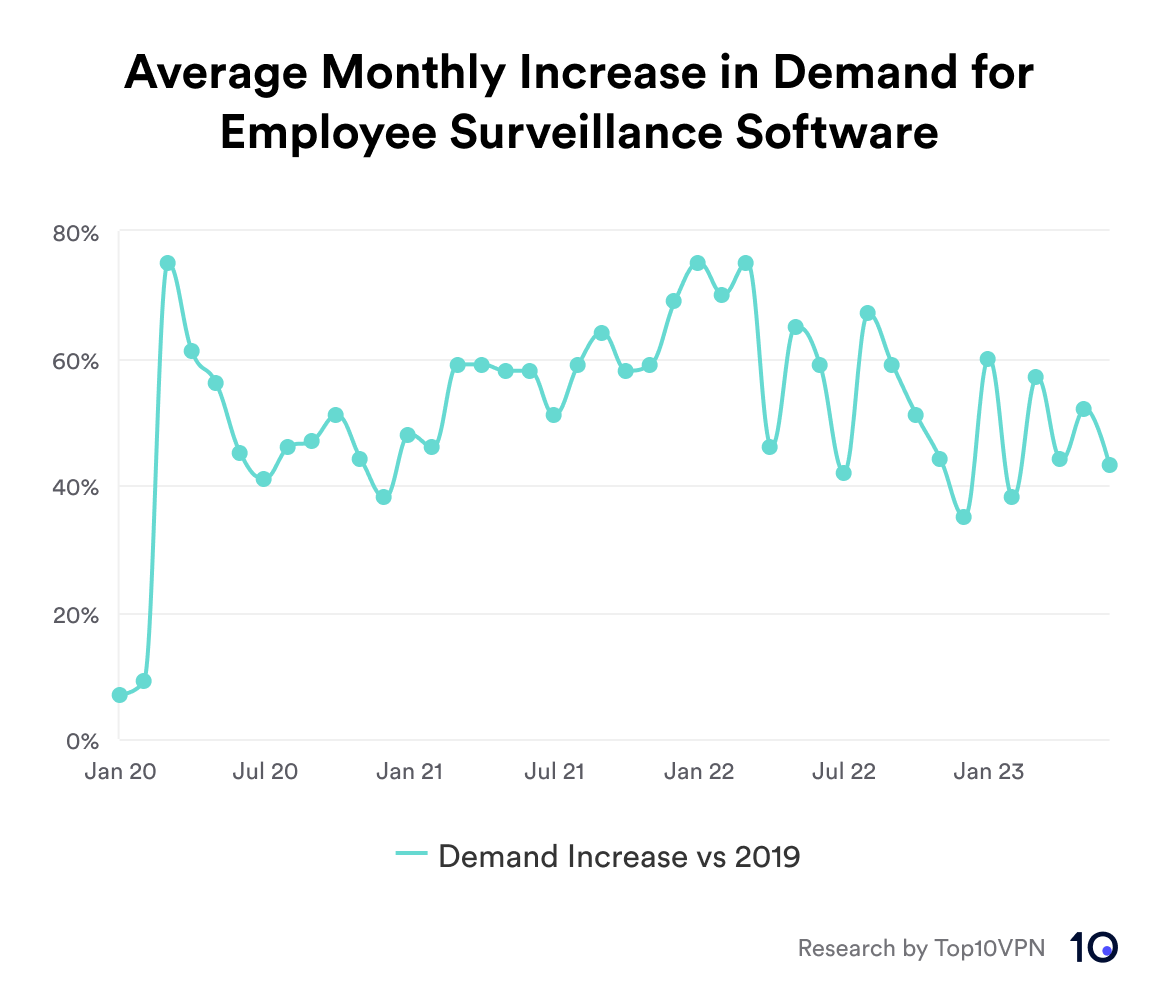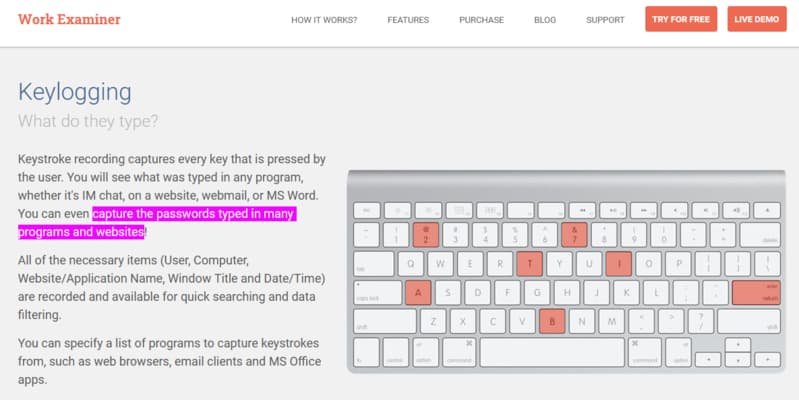Remote Work & The Rise of Employee Monitoring Software
A third of the U.S. workforce shifted to remote work since 2020, according to a survey conducted by MIT.[1]
Fearful this could lead to a drop in productivity, employers have turned to remote monitoring software to ensure their staff work effectively from home.
This software is capable of recording almost everything an employee does on their computer, from covert webcam access to random screenshot monitoring.
The rapid rise of such invasive software risks setting new standards of workplace surveillance and dramatically undermining employees’ right to privacy.
Demand for employee monitoring software shot up by 75% in March 2020 compared to the 2019 monthly average. It remained high the following month too, at 61% compared to 2019.
More than three years on, hybrid working is being touted as the future of employment, with its mix of remote work and days in the office.
The prospect of working from home becoming permanent, even if only for part of the week, appears to have prompted a resurgent appetite for this intrusive computer monitoring software.
Employee monitoring software demand has been 49% higher on average since the start of 2023 than in 2019. This is a slightly smaller uptick than the 57% recorded in 2021 and 58% in 2022, however, as the graph below demonstrates, the annual averages mask significant month-to-month fluctuations. It is therefore too early to suggest any notable change in the overall trend observed since the start of 2021.

Chart showing month-by-month increase in demand for employee surveillance software compared to the 2019 monthly average
As the above graph shows, there has been a sustained increase in demand for employee surveillance following the initial spike in early 2020.
While demand for the software did start to weaken in the final quarter of 2022 to its lowest point since early 2020, it remained 35% higher in December 2022 than in 2019. Demand fell to similar levels in December 2020 only to rebound strongly over the course of the following year.
The difference this time however is that between August and December 2022 the size of the average increase in demand compared to 2019 actually declined month-to-month for four consecutive months for the first time since we began monitoring it in early 2020.
This sustained decline did not continue into 2023, however, when demand immediately bounced back in January 2023 to 60% higher than in 2019.
Demand for employee surveillance software continued to fluctuate month-to-month during the first half of 2023. Looking at the first six months of 2023 as a whole, demand was up 49% on average compared to 2019, which is not quite as strong as it was in 2021/22. However, even when demand for the software eventually flattens out, as it naturally must, the damage to employee privacy will already have been done.
Why Are We Tracking Employee Monitoring Software Demand?
History has shown that once heightened surveillance measures are introduced they are often never reversed.[2]
The developers of employee monitoring software also do their best to guarantee that their products become permanent fixtures of the modern workplace. Eight in 10 developers of the 10 most in-demand employee monitoring software tools encourage long-term use by offering annual price incentives and lifetime purchasing options. Only the developers of Time Doctor and Crossover do not actively promote annual price incentives on their websites.
There has been a huge rise in the range and sophistication of surveillance technologies being adopted around the world and, as remote work looks set to continue for the foreseeable future, invasive employee monitoring may also be here to stay.
“There is something depressing about the idea that full-grown adults must be subjected to routine surveillance of their activities in order to hold the jobs necessary to pay their bills and provide for their families.” – ACLU[3]
As advocates for internet freedom and the right to privacy, we believe this kind of computer monitoring in the workplace should never be normalized. By accepting computer usage monitoring and internet surveillance by employers, the risk is that it will further encroach into all aspects of everyday life.



